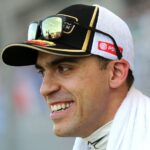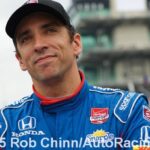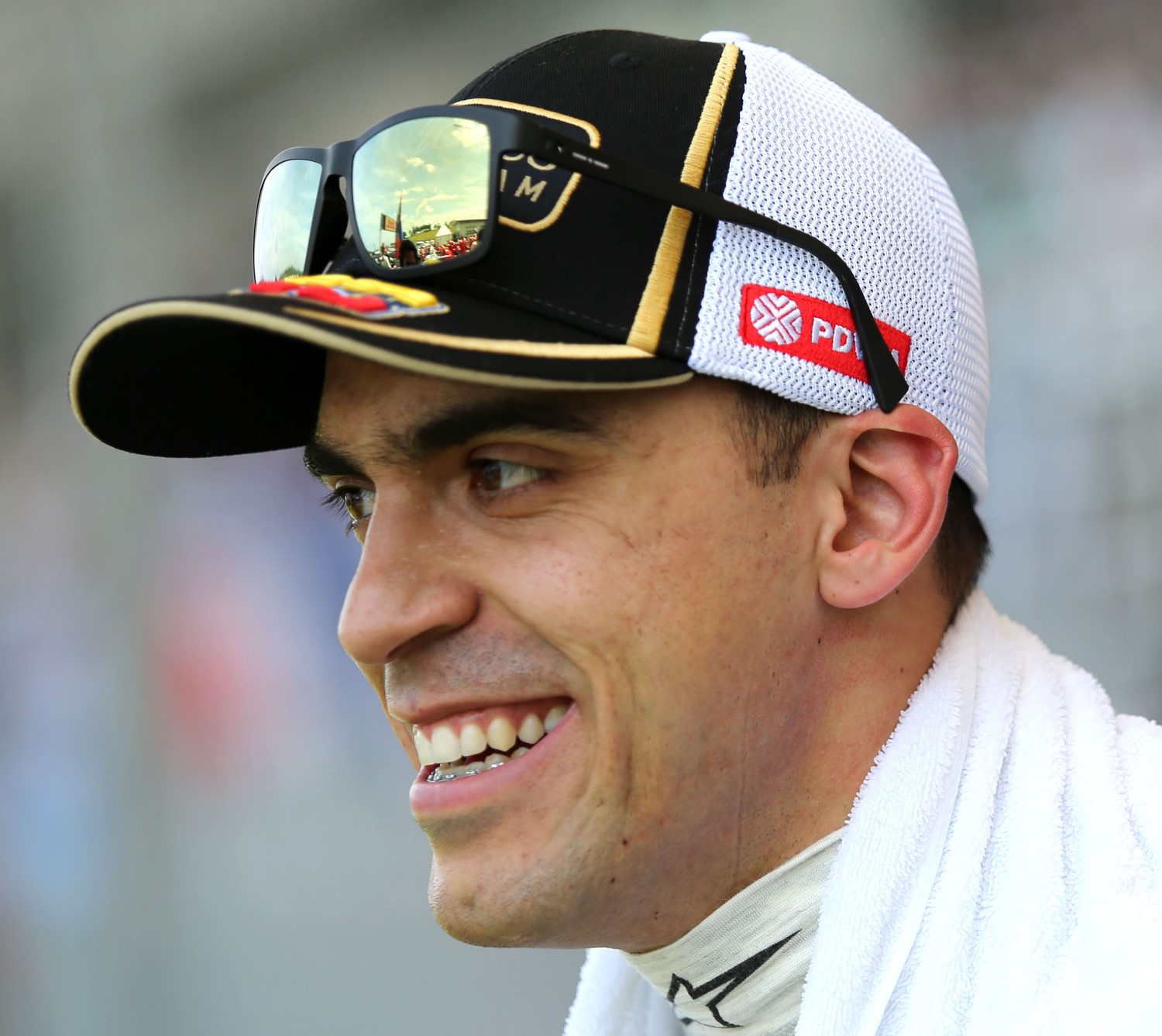Misc. observations from the world of racing
 |
| Pastor Maldonado – have check, will drive. |
If you've read AutoRacing1 for any length of time, you know we've dedicated called attention to the phenomenon of 'pay' drivers or 'ride buying' – particularly in the junior open-wheel ranks. This is the phenomenon of drivers securing race seats based on their ability to bring the desperately needed funding to the team, often in lieu of drivers with more talent.
Now, it should be noted that the subject is not necessarily a black and white one. For example, there are World Champions, all-time great drivers whose rise to the sport's top-levels launched via significant financial support. Further, I've written in the past that while drivers receive the lion's share of animosity from followers of the sport, the incentive structure established by many sanctioning bodies in many ways encourages teams to seek drivers who bring sponsorship.
The above stated, drivers gaining seats because of funding in lieu of more talented, not as financially endowed drivers is a less-than-savory practice, which in my opinion does erode at the credibility and appeal of the sport. After all, someone does not become shortstop for the New York Yankees because he or she has backing from an oil cartel or daddy's restaurant chain.
But whether we like it or not, 'ride buying' is a reality of modern racing. It's also a reality that many have long perceived as primarily an open-wheel racing problem. However, followers of the sport know that pay drivers have become increasingly more and more prevalent in the lower levels of stock car racing in recent years. This fact was reiterated recently with John Wes Townley's NASCAR Camping World Truck Series win in the Rhino Linings 350 at Las Vegas. The 25-year-old Georgia native of course, enjoys significant backing from Zaxby's, the casual restaurant chain, which his father Tony is a co-founder of.
[adinserter name="GOOGLE AD"]Now, to be clear this is not an attack on Townley. While no one will mistake him for the next Jimmie Johnson, Townley is by all accounts is a fine and decent young man chasing his dream of being a top-level stock car racer. He has also taken a clear step forward as a driver in 2015 towards shedding his very well-earned John Wrecks Weekly image. And while many will point he won the Vegas race due to fuel mileage, no can dispute that he in fact won the Vegas race.
Still, make no mistake: 'pay' drivers are more the rule than the exception these days at the lower levels of NASCAR. And we all know these changes at some point make their ways to the top levels.
SAFER Barrier
Townley's win was greatly overshadowed, of course, by Austin Theriault's crash, which predictably prompted calls for the SAFER barrier to be installed at all oval tracks NASCAR races. Yes, such sentiment is certainly well-intentioned and something the racing industry should strive for. However, the idea that every single race track NASCAR runs should be outfitted in its entirety with the SAFER barrier tomorrow is completely and utterly ridiculous.
For starters, the SAFER wall can cost up to $500/foot, which works out to about $2.64 million a mile. Let's say a 2.5-mile track wanted to outfit itself entirely with the SAFER barrier (inside and outside walls), and while I know this is not exact let's say that's 5 miles of SAFER barrier needed. That works out to over $13 million. Indianapolis Motor Speedway President Doug Boles admitted after Kyle Busch's accident at Daytona in February that such a proposition was unfeasible for this track.
And what would it cost to outfit every single track a NASCAR touring series races at 32 miles of racetrack (again inside and outside walls)? Somewhere in the vicinity of $80 million.
Yes, any lawyer in the racing industry will tell you, you cannot put a price on safety. However it's equally true that no one ever purchased a ticket to go to the race and watch the SAFER barrier. In essence, the SAFER wall, outstanding as it is, falls entirely into the expense column without producing anything in the revenue column. And while SMI and ISC are billion dollar companies, to think they have such cash just lying around is foolish.
Look, it would be great to see the SAFER barrier on every inch of every track a major racing series competed. Just know if that were the case, there might not be any racing.
GRC
Without rehashing all the details, we know Andretti Autosport endured a difficult 2015 IndyCar season. We also know that their manufacturing partner in Red Bull Global Rallycross, Volkswagen, has seen better days, in the wake of the recent emissions scandal due to vehicle emissions violations.
However, the combination of Andretti and VW has proven to be quite formidable of late. Scott Speed swept last month's doubleheader in Los Angeles with teammate Tanner Foust coming in second and third, respectively. This weekend Foust swept the doubleheader in Barbados with Speed coming home second both days. The two second-place finishes mean Speed has finished first or second in the last seven GRC races dating back to July's doubleheader at Detroit.
The recent Andretti surge combined with some poor finishes by previous championship front-runners such as Ken Block and Sebastian Eriksson means Speed holds a 36-point lead over Foust entering next month's finale at Las Vegas. The Andretti duo enters the Vegas event as the only two drivers with a mathematical chance at the championship.
Newgarden
From the perspective of Josef Newgarden's IndyCar career, I imagine the Tennessee native is disappointed he could not move to Team Penske or Chip Ganassi Racing this offseason. Newgarden, of course, re-signed with CFH Racing two weeks ago for 2016. And from the perspective of competitive balance Newgarden staying with CFH Racing is a very welcome development for the series.
That said, I think it's a near certainty Newgarden will be driving a Penske or Ganassi car in 2017, and may already be signed to one of the two.
IndyCar
Newgarden's re-signing with CFH largely took the air out of whatever drama there may have been from the 2016 Silly Season. And feel free to refresh my memory if there's something I'm missing, but aside from Newgarden's re-signing has there been ANY IndyCar news of substance since the season ended in Sonoma?
Also, did I read Mark Miles correctly earlier this week when he said Chevrolet AND Honda haven't yet signed on for 2016?
More…
 |
| The open wheel community seems to think it's Ok if we lose more Justin Wilsons. It's part of the allure of open wheel racing apparently. Cry no tears no more. |
In the same interview with Curt Cavin, in which Miles said Chevy and Honda haven't signed and that Indy Cars wouldn't be getting canopies (that's a whole other discussion), Miles was asked by Cavin how the series was dealing with two recent “one in a million scenarios" in reference to the James Hinchcliffe accident at Indy and Justin Wilson's fatal crash at Pocono.
Suffice to say, I don't agree with Cavin's implication, nor do I like the manner in which he conveyed an opinion, as fact. Mr. Cavin has multiple platforms, in which he can reach a large audience and articulate his thoughts; the merits of which I would be happy to consider. However, based on the merits of the accident as I know them, I was unaware that it had been determined to be a 'one in a million' occurrence. Furthermore, I found it odd that Cavin felt the need to lump the Hinchcliffe and Wilson incidents together.
Ironically, or perhaps not, the 'one in a million' theme echoes what has come out of INDYCAR offices since Wilson passed. Remember, an official series press release about the “Celebrating the Life of Justin Wilson" event referred to the “freak accident" that claimed Wilson's life.
Now, I suppose Wilson's accident may have been 'freak', or a 'one in a million' occurrence as Cavin says. But if this is the case, may I ask how exactly was this conclusion reached? Was there an investigative study in which the data overwhelmingly rendered such a conclusion? Although I have not seen the results of any study, I have to presume series was confident enough in said findings to use the word “freak" in an official release? Also, did said data take into account the fact flying debris struck a spectator at St. Petersburg in rendering its conclusion Wilson's death was the result of a 'freak accident'?
To my knowledge, there has been as yet, nothing empirical that would support such a conclusion. And if the series is calling Wilson's death a 'freak accident' and having said sentiment echoed by its pet media journos absent any meaningful investigation into the matter, that is more than a little concerning.
Brian Carroccio is a columnist for AutoRacing1. He can be contacted at BrianC@AutoRacing1.com.
[adinserter name="GOOGLE AD"]
